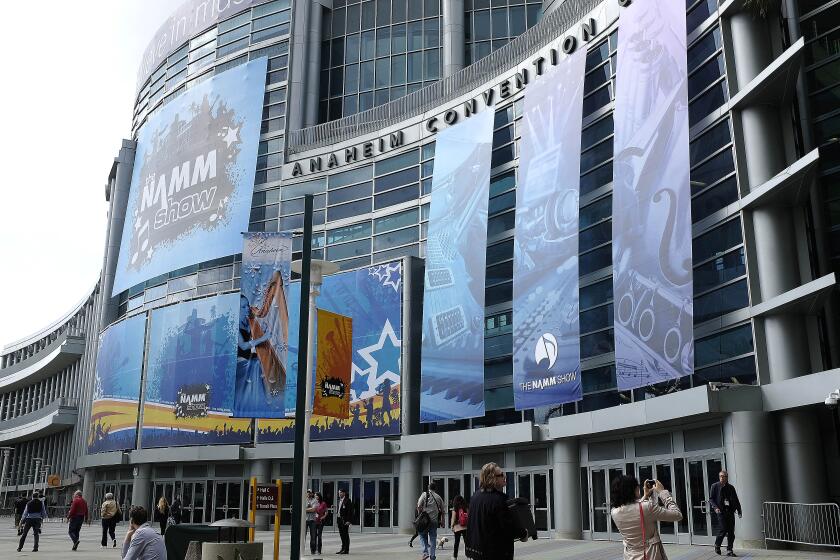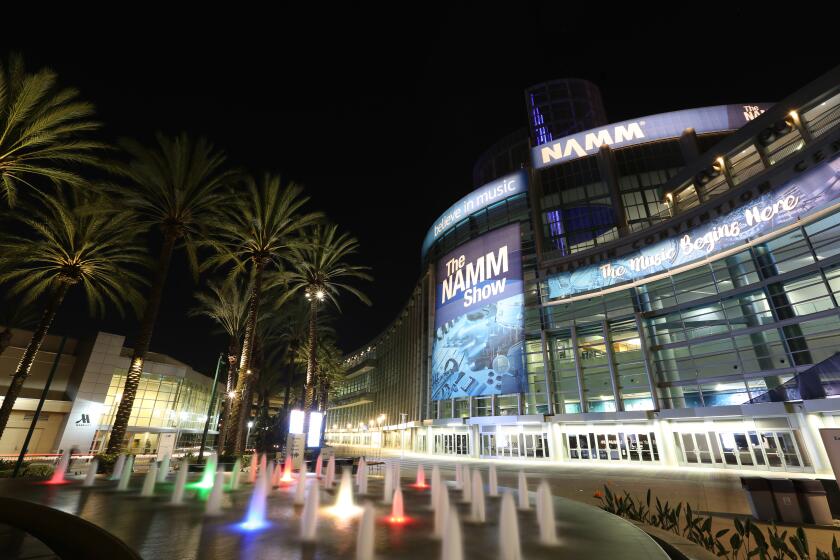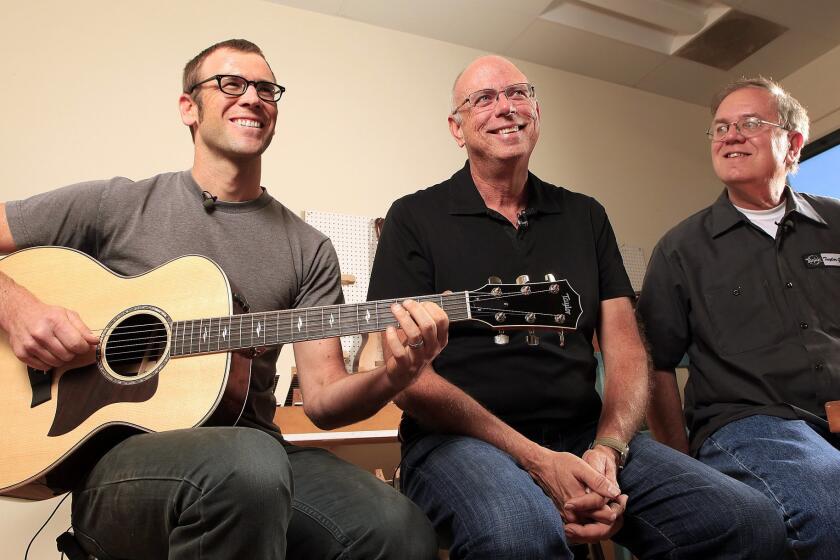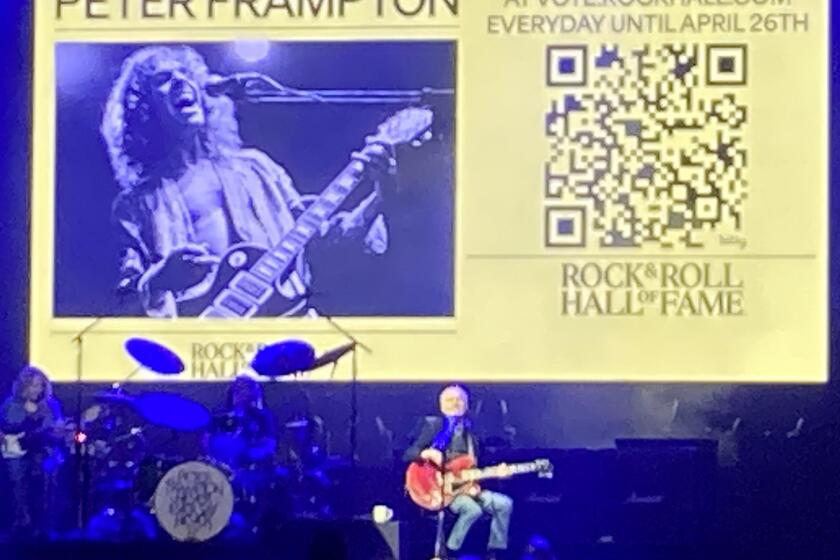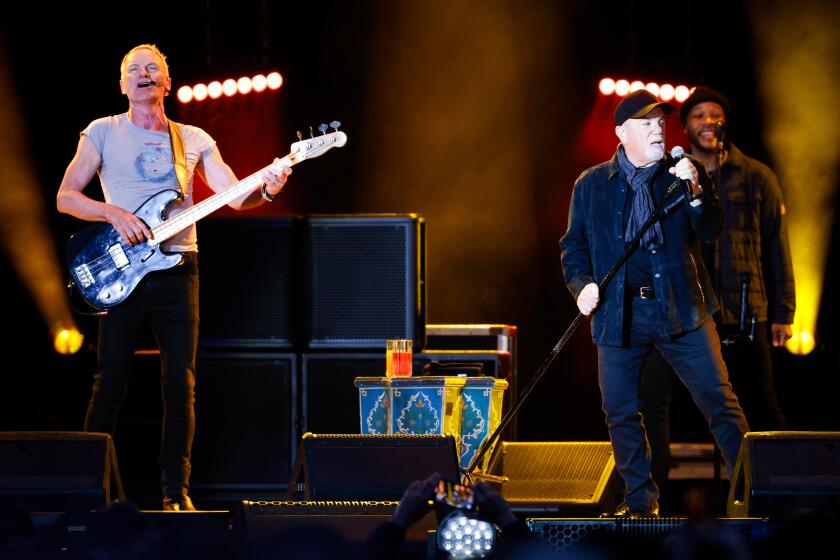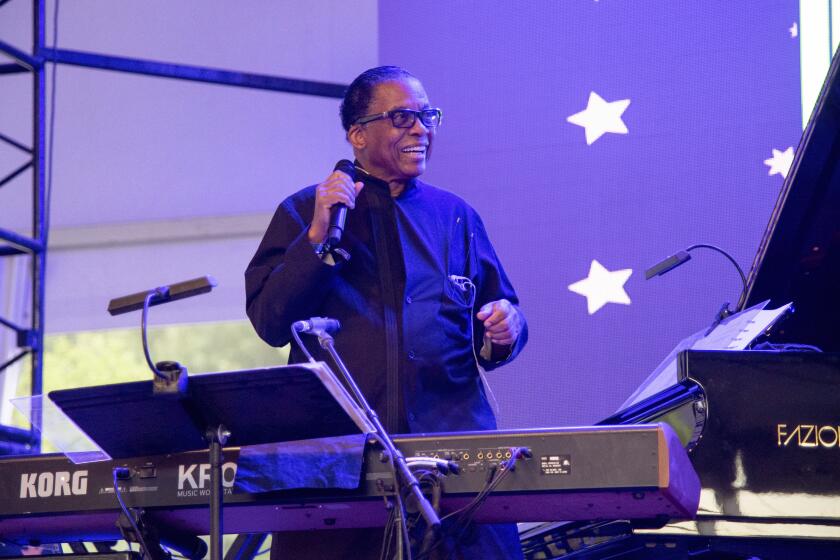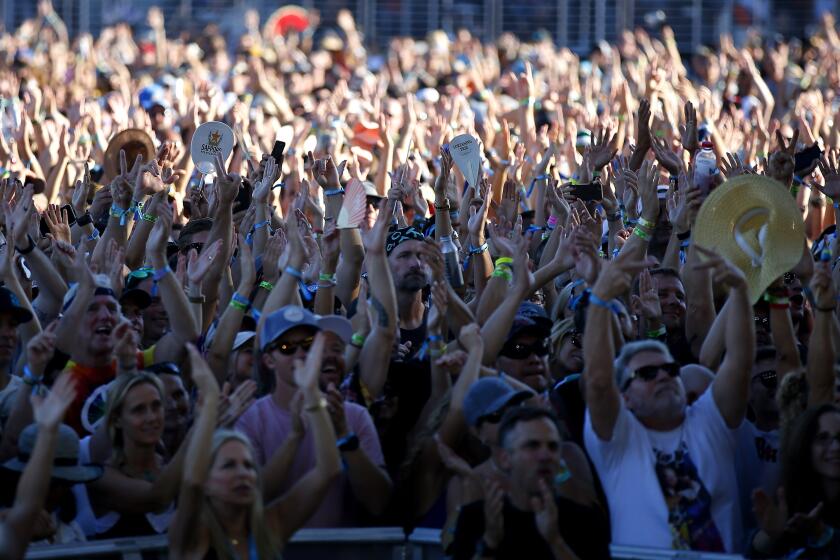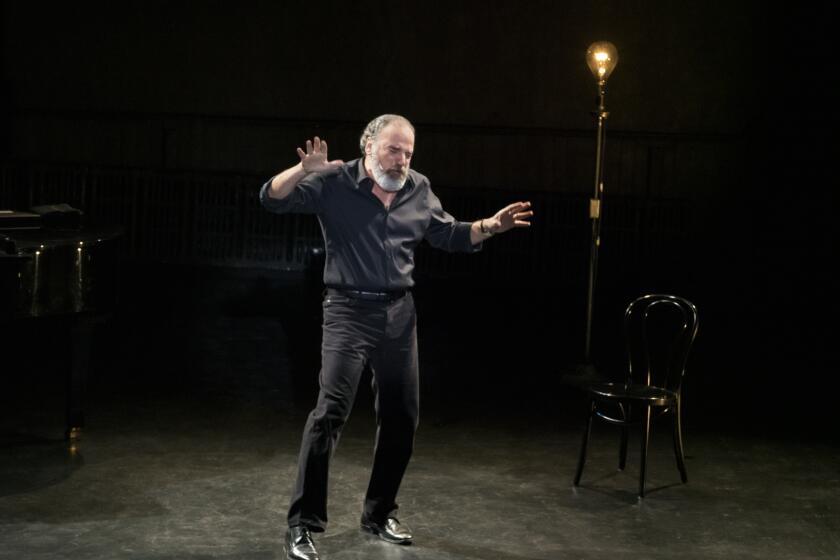NAMM Show returns as streamlined, safety-first live event after 2021 iteration pivoted to all-online format
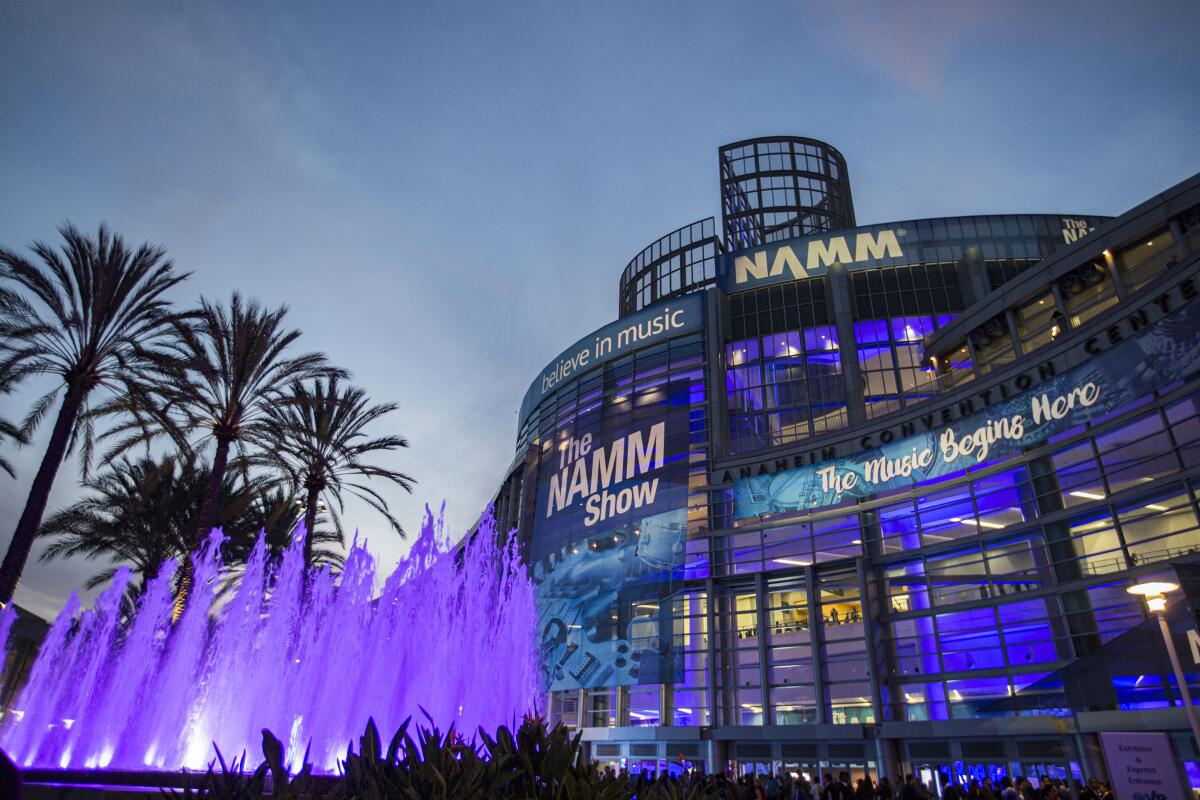
This weekend’s 121-year-old show returns to the Anaheim Convention Center as U.S. music instrument and equipment sales jumped to $8.8 billion in 2021, a nearly billion-dollar increase from just before the pandemic
How will the NAMM Show — the world’s largest and oldest annual music instrument, equipment and technology show — pivot back to being a live event this weekend after canceling last year’s edition because of the COVID-19 pandemic?
• By proceeding with an abundance of caution and by offering on-site Rapid Antigen and PCR testing to attendees, along with N95 and surgical masks.
• By shifting from its traditional winter-time slot from January to June, streamlining this year’s edition from four days to three and consolidating it with the 2022 summer NAMM show, which will resume in Nashville in July 2023.
The world’s largest annual music instrument and equipment trade show, put on by Carlsbad-based NAMM, will also consolidate its 2022 summer NAMM Show and move it from Nashville to Anaheim, then hold separate shows in 2023 in both cities
• By spacing exhibit areas farther apart at the Friday through Sunday, members-only event at the Anaheim Convention Center and reducing its footprint by 50 percent in the 1.8 million-square-foot center and several adjacent hotel ballrooms.
• By debuting NAMM Show +. It is a 24/7 interactive unified platform that builds on last year’s first-ever online NAMM Show reinvention — the free, five-day “Believe in Music” week — to connect brands and attendees in comprehensive new ways. NAMM Show + is open to all show registrants and accessible from anywhere in the world for those who can’t attend in person.
Garth Brooks and Melissa Etheridge will be honored at the weeklong virtual event, which starts Monday and follows year of dizzying highs and devastating lows for global music industry
• And by introducing color-coded badges that will enable each attendee to silently signal how much physical contact they are comfortable having. Green indicates hugs and handshakes are welcome; yellow indicates fist bumps and other minimal contact; red indicates a preference for no physical contact.
“We know the pandemic is not over, although I would say it’s releasing the grip that has been controlling our lives,” said Joe Lamond, the president and CEO of the Carlsbad-based NAMM (short for National Association of Music Merchants).
“The producers of ‘Sesame Street’ used to say that every season is their ‘experimental season.’ Well, this is our 121st experimental season,” Lamond continued.
Instrumental passion brings out the kid in the tireless CEO of Carlsbad’s global-reaching National Association of Music Merchants
“We are still feeling the impact of the global pandemic, the supply chain problems, and all the other issues that have arisen in this period. But we’re ‘putting the band back together.’ We’re ready to do the show. And we know how to do this.”

Downsizing and expanding
More than 3,500 brands of instruments, sound and lighting gear, recording equipment and other products from between 900 and 1,000 companies will be displayed at this weekend’s NAMM Show.
That is a 50 percent drop from the 7,000 brands exhibited by 2,000 companies at the 2020 edition. Attendance this year is expected to be no more than half of the 115,000 in 2020, with fewer members traveling domestically and from abroad to participate.
Moreover, some major brands that have long been NAMM Show mainstays will be absent, including Fender Guitars and Paul Reed Smith Guitars. Also sitting out this year’s edition is Gibson Brands, whose portfolio includes Mesa/Boogie Amps, Gibson Pro Audio and such noted guitar lines as Gibson, Epiphone and Kramer.
A Gibson representative told The San Diego Union-Tribune that the decision to skip this year’s edition is based largely on timing.
“Noting that our European dealer base is not attending NAMM in Anaheim in June — and due to the date shift and issues with compressed timelines and logistics — we will not be attending,” the representative said via email.
“This is not a permanent move. ... We are supportive partners with NAMM and will continue to be.”
The absence of such major companies will be palpable.
Even so, this year’s NAMM Show seems to be coming at an opportune moment for an $18 billion-plus global industry that — in 2019 — saw the U.S. market top $8 billion for the first time. That figure dropped to $7.3 billion in the U.S. in 2020 because of the pandemic, while the global total dropped to $16.9 billion.
But market earnings rebounded dramatically in 2021 to just over $8.9 billion in the U.S. — despite live-music events being dormant for most of 2020 and a good portion of last year, which brought sales of audio and lighting equipment for concert venues, churches and other events venues to a near-standstill.
How, then, did overall sales jump to $8.9 billion last year?
Credit the unprecedented demand for instruments and recording gear that can be used at home by consumers.
“Last year was the biggest sales year in U.S. history. There was a global bump as well, if not quite as large,” said Brian Majeski. He is the president of The Music Trades, a New Jersey-based company noted for its in-depth analysis of the global music products industry.
“School band instrument sales were curtailed and live sound gear took a hit as well,” Majeski continued. “But sales for anything you can play at home went through the roof. There was a torrent of stimulus money and people were stuck at home with cash in their pockets.
“Guitar sales jumped from 2.8 million before the pandemic to 3.5 million, and it was the same with keyboards. Most companies were supply-constrained, or their sales would have been even higher.”
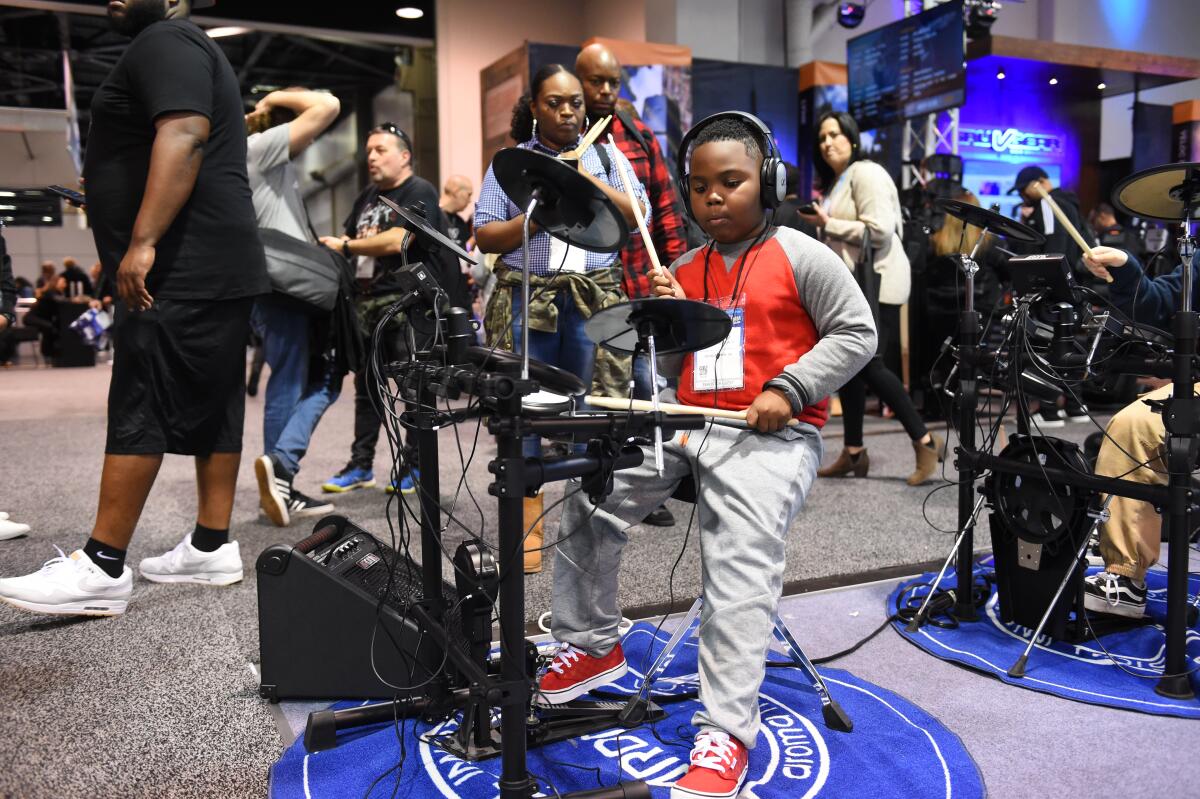
Face-to-face interaction vital
The imminent return to an in-person NAMM Show is welcomed by Yamaha Corp. of America President Tom Sumner, new Taylor Guitars’ honcho Andy Powers and Sammy Ash, whose Sam Ash Music has 45 stores nationwide, including one in San Diego and five others in Southern California.
“We’re a very touchy, feely industry,” said Ash, speaking from his New Jersey office.
“I may only see someone for five minutes at the NAMM Show, but those five minutes are very important. And there are certain things you might say or discuss that won’t happen on a computer, certain nuances you won’t catch online.”
While Yamaha and Taylor will have a smaller footprint and less staffing than at recent editions of the NAMM Show, both companies share Ash’s enthusiasm about the importance of being able to interact face-to-face.
“Not having an in-person NAMM Show in Anaheim last year impacted us,” Yamaha’s Sumner said, speaking from his Buena Park office.
“It’s tough to get people excited about new musical instruments online because the instruments are so tactile. For retailers and musicians, not being able to touch and play them makes it that much more difficult.”
Yamaha will unveil 20 new products at the NAMM Show this weekend, including its motorcycle inspired Revstar guitar line and the latest iteration of its $150,000 flagship CFX Grand Piano. As in previous years, Yamaha will this weekend host several major outdoor concerts in the plaza next to the Anaheim Convention Center. They are free to show attendees.
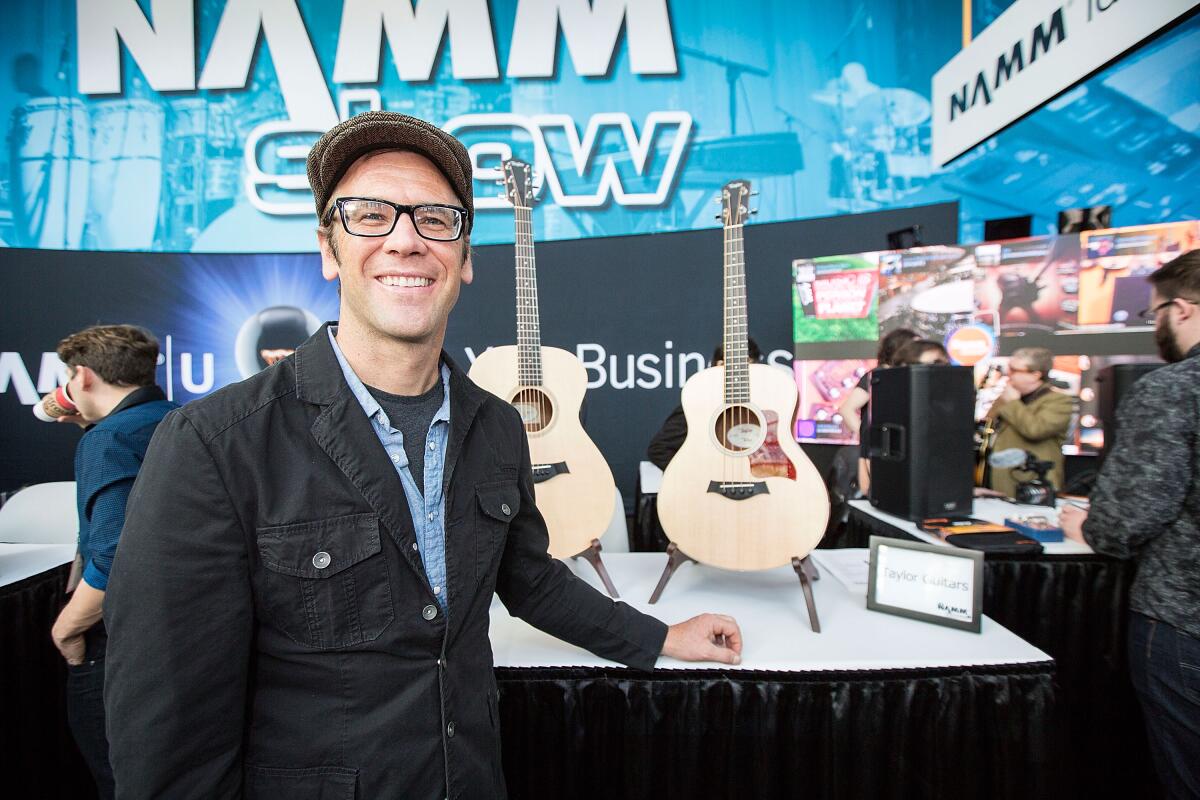
Taylor, whose 2021 sales surged to a record $148 million, will also unveil new products, most notably its new Koa 700 acoustic guitar line. For retailers and musicians alike, the appeal of these and other instruments is best heard and felt in person.
“NAMM did a great job of pivoting to online last year and it was absolutely the right thing to do,” said Powers, who on Monday was named Taylor’s new CEO and president.
Andy Powers is now president and CEO after designing instruments at the El Cajon powerhouse for more than a decade
“But there’s something that happens in person — the human interaction with people and instruments — that can’t happen online. And the NAMM Show is like a family reunion where everyone from every aspect of the industry gets together to talk shop, evaluate instruments, see what’s coming next, or just catch up with old friends.
“It’s a unique event that I’ve attended since I was a kid. The playing of instruments and making music are very human experiences, so it makes sense our industry is very relationship-based. You can’t really do that by scrolling around on the Internet. That’s why the NAMM Show feels more important now than it’s ever been.”
NAMM CEO and President Lamond announced last year that he would step down after the 2021 NAMM Show, but the pandemic put those plans on hold. He has agreed to stay on until after the completion of the 2023 edition, which is now scheduled to return to its usual January time slot.
“Like most people, for me the pandemic and its impact on our world and families came as a wholly unanticipated event,” Lamond said.
“So, this isn’t at all the way I anticipated things going for NAMM or the show. At the same time, I’m grateful I’m still able to be a part of it and grateful for the opportunity to help the industry come back together again.
“We left the 2020 NAMM Show on a great path and with incredible optimism for the year ahead. Then, six weeks later, the pandemic hit — and it’s not over yet. That’s why this year’s NAMM Show will be half the size of last year’s, both in terms of square footage and the number of registrants.”
What will future iterations of the NAMM Show look like?
Lamond anticipates hybrid events like this year’s edition, which combines the in-person gathering with the online NAMM Show +.
“It’s definitely a time to re-set a lot of things in life, and an opportunity to see what was really valued in gathering at the NAMM Show,” he said.
“And, for us, what it came down to is that people wanted to get together, even if it doesn’t (entail) having huge exhibits of new instruments and gear. Many companies told us: ‘We want smaller meeting rooms to meet with our customers and make plans for next year.’
“In some cases, being able to get together and meet in person is more important than having the kind of huge, sensory-overload NAMM Show we had in Anaheim in 2020. So, we’ll see what the 2023 and 2024 shows look like. And we will never, ever say the pandemic is gone.”
By the numbers
NAMM won’t release its complete 2021 global sales report until later this summer. But the nonprofit organization did provide some preliminary highlights that illustrate how dramatically the demand for some instruments soared last year.
• Sales of acoustic guitars increased by 15.6 percent and the retail value of those guitar sales increased 14 percent to $1.1 billion.
• Sales of electric guitars increased by 30.7 percent and the retail value of those guitar sales increased by the same amount as well, to $931.3 million.
• Acoustic pianos sales increased by 37.7 sales and their retail value increased 46.7 percent to $309.7 million.
• The school music market, which plunged in 2020, saw increases in every product category. The total market was up by 11.8 percent in instruments sold and increased 18.5 percent in retail value to $651.3 million.
• The professional audio market — which includes loudspeakers, power amps, sound mixing consoles, cables and microphones — grew 16.5 percent in retail value to $1.5 billion.
Get U-T Arts & Culture on Thursdays
A San Diego insider’s look at what talented artists are bringing to the stage, screen, galleries and more.
You may occasionally receive promotional content from the San Diego Union-Tribune.
